King tides are coming. Is Seattle's South Park neighborhood ready?
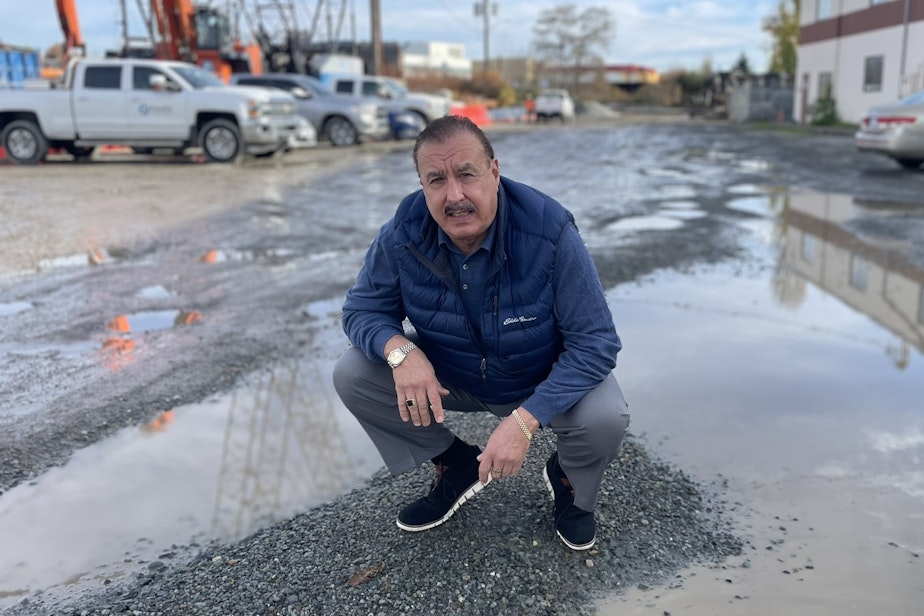
Tuesday, Nov. 28 is the first king tide of the season.
In South Park, business owners, residents and the government are hoping to avoid a repeat of last season's catastrophic flooding.
A king tide occurs when the moon and the sun are perfectly positioned to drag tides to their highest level of the year. King tides peak in January.
Last season, a king tide combined with low atmospheric pressure during a 100-year storm led to catastrophic flooding in Seattle’s South Park neighborhood.
Basically, the weather and the solar system conspired to drag more seawater upriver into this low-lying neighborhood.
Carlos Gonzalez owns Cuña’s wholesale Mexican foods.
He says every winter, it takes a couple weeks for workers to prepare his warehouse for floods. First, workers must surround it with sandbags.
Sponsored
Then, there there’s the preparation inside his warehouse. Gonzalez brings in truckloads of wooden pallets, and stacks them three deep under the beans and rice. In his office, he stacks pallets under the desks and computers. And then, for months, they have to work like that, until the king tides are over.
“They have to come up with a solution,” Gonzalez said. “We cannot live like that all the time. And it’s getting worse and worse.”
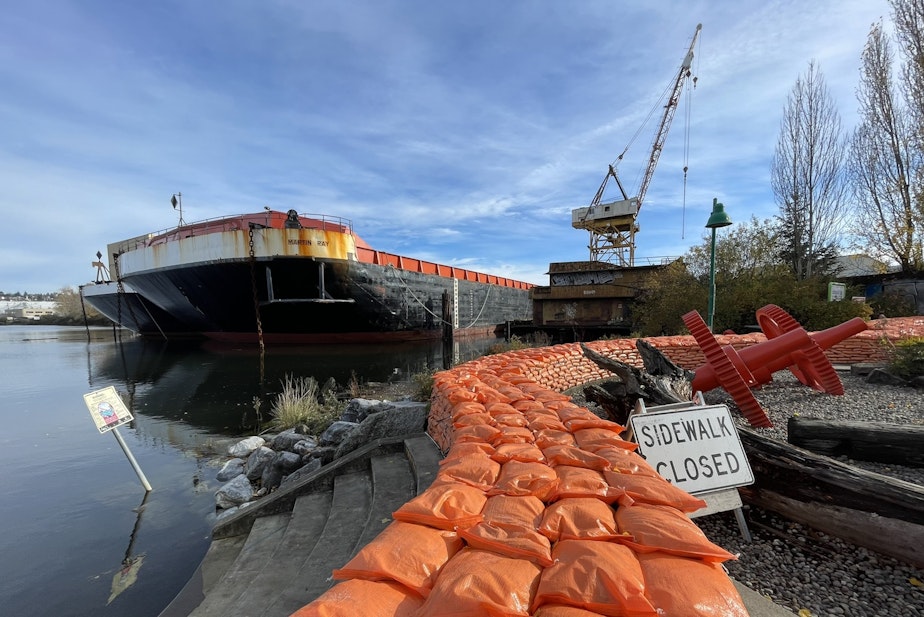
“They,” in this case, refers to the government. And this year, Seattle and King County made some major flood prevention investments in South Park. The sandbag barrier along the Duwamish is taller and twice as wide as it was last year.
Some roads were refitted with larger stormwater drainage pipes and repaved. Those pipes were routed to a new pump station. The station stores excess stormwater for awhile before sending it into the Duwamish. The city also installed more grinder pumps at homes where a storm surge can send sewage surging into people’s basements.
Sponsored
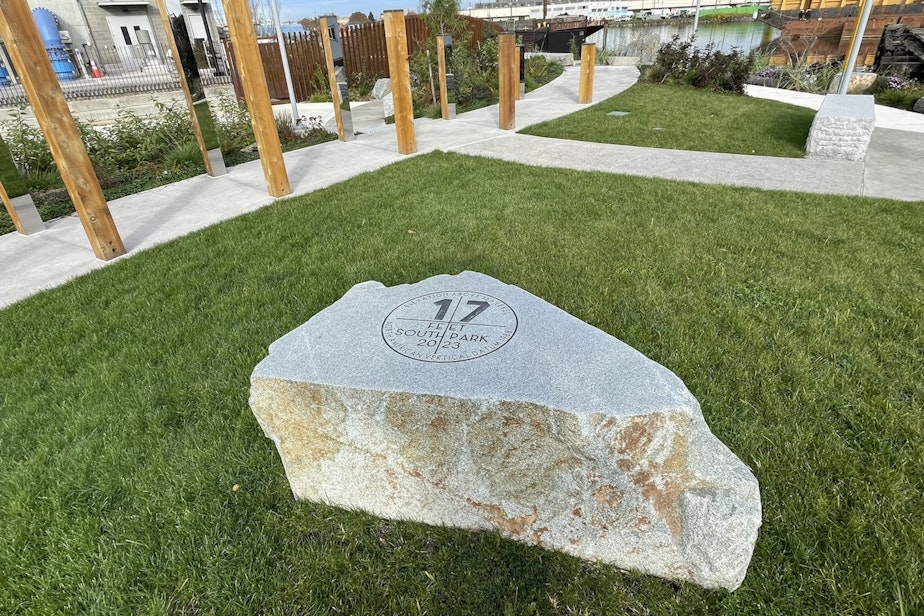
Each of these systems is designed to deal with a different kind of flooding that South Park is at risk for — storm surges, surface runoff, and sewage back flow during king tides.
Their limited roles can cause confusion about why flooding still occurs. For example, the new pump station handles stormwater runoff from the streets, but can’t handle the vast volume of water that will inundate South Park during massive king tides.
The improvements have been a long time coming. “This is a very under-served neighborhood,” says Wan-Yee Kuo, who manages the new pump station for Seattle Public Utilities, “and that’s why we have been investing a lot of effort and money, as you can see.”
Sponsored
But even when the weather allows all these systems to do what they’re built to do, they’re sized only for 25-year storms. Last year’s storm was a 100-year storm. That’s a storm of such size that it theoretically occurs about once a century, on average.

That means these improvements would not have prevented last year’s catastrophic flooding in South Park.
“We’re doing the best we can to reduce the risk,” says Kuo. “Now, unfortunately, it’s not gonna be perfect.”
She added that there’s no way Seattle ratepayers could afford a system robust enough to handle all conditions.
Sponsored
“So we are also relying on the community, [to] be aware of when severe storms are coming, so they can prepare themselves,” she said.
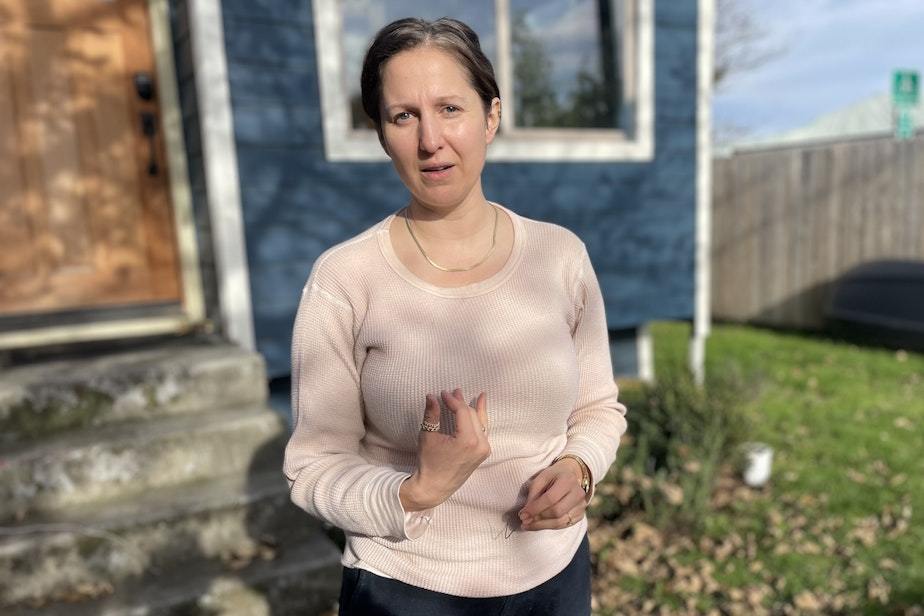
Last year, the back-flow preventer in a city-installed grinder pump at South Park resident Emily Lucey’s house failed. Her basement, including a nursery for her soon-to-be-born baby, filled with three feet of sewage-tainted water.
“My husband was just kind of wading around in shorts, trying to frantically save hard drives because he’s a videographer,” she said.
The city paid for her repairs. Lucey's example hints at the way costs can add up as the city tries to balance its responsiveness with its responsibility.
Sponsored
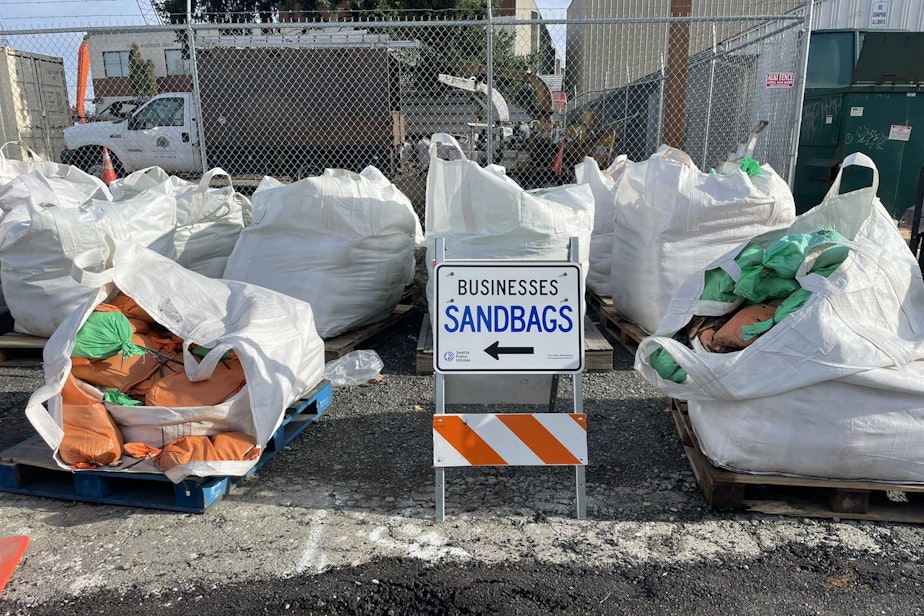
Ellen Stewart, deputy director of Seattle Public Utilities, said South Park will be “inundated with water by 2050.” City and county representatives will meet with community members after Thanksgiving to discuss long-term strategies to address that threat.
“There are several options,” Stewart said. “There's of course, some type of barrier along the river, kind of like our temporary wall, but of course, more elaborate.”
Think of the floodwall in Mount Vernon, Washington, in Skagit County, which protects its downtown during flood events.
RELATED: A wall to hold back the Skagit River survives its first major test
“There could be raising the level of the streets in South Park,” she said, as downtown Seattle’s early developers did in Pioneer Square when high tides backed up sewage into buildings there.
“There could be some sort of managed retreat where folks leave strategic areas,” Stewart added. “It's really up the community to decide what works best.”




